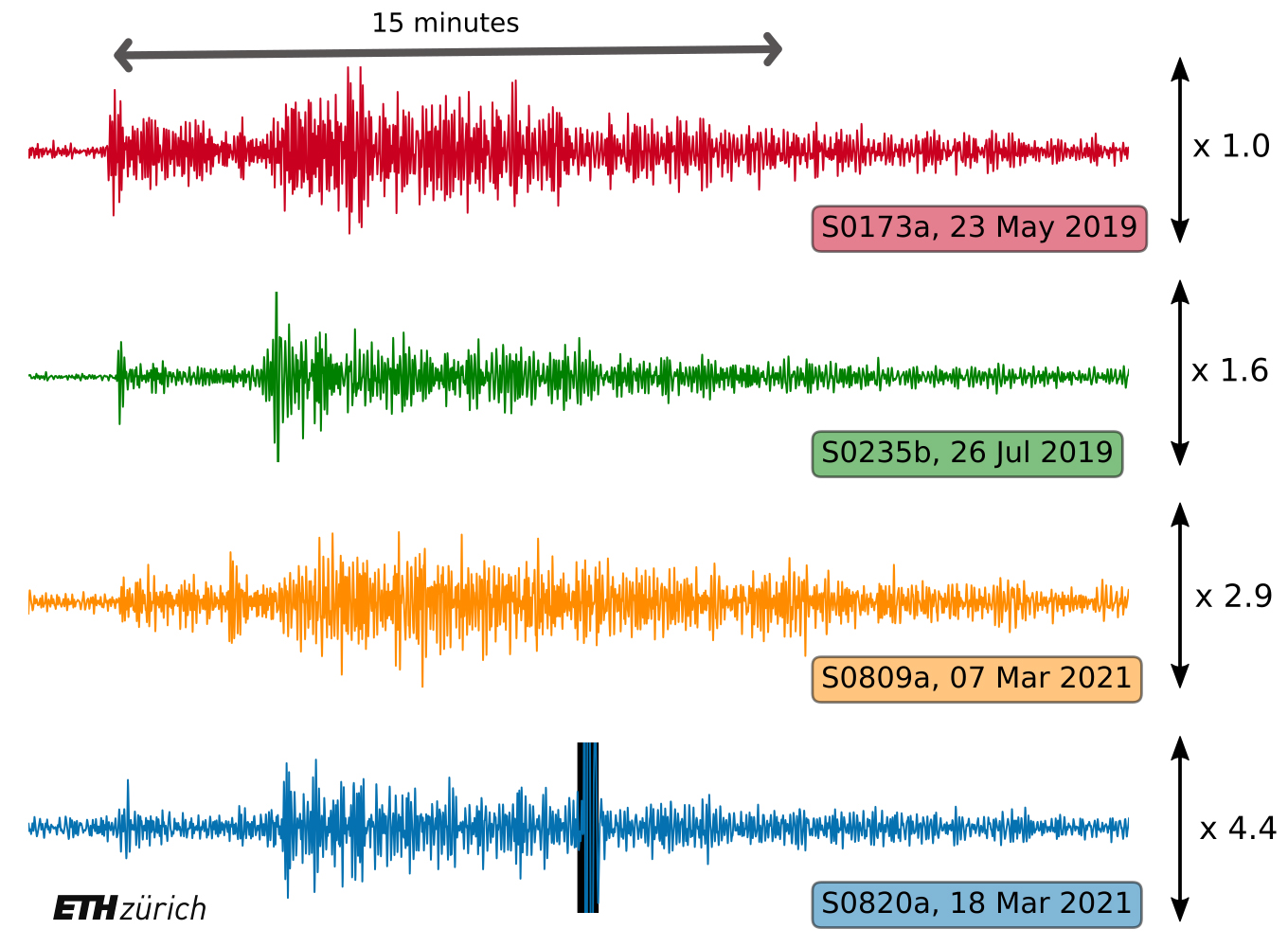InSight detects large marsquakes
NASA'S InSight mission detected two large marsquakes as summer emerges, the winds calm, and the dust settles.
Now, after one Martian year (687 Earth days) the Marsquake Service led by ETH Zurich and operated by the Seismology and Geodynamics group and the Swiss Seismological Service is faster than ever at characterising seismic activity on the red planet.
After several months of windy weather and dust storms, the atmosphere of Mars is becom-ing quiet again and the seismometer on the InSight lander started recording significant marsquakes. In early March, two new marsquakes with magnitudes of 3.3 and 3.1 were observed. Within 12 hours of the data arriving on Earth, researchers at the Marsquake Service at ETH Zurich determined the location, magnitude and, in one case, even the focal mechanism. This rapid result demonstrates that the whole chain of data recording, transmission, and analysis set-up by the InSight mission is functioning efficiently and rapidly. These moderately sized events recorded at over 1,200 km distance and by a single station (that would not even be observed by a similar station on Earth), are sufficient to confirm the emerging geological interpretation of the internal structure and surface tectonics of the red planet acquired over the past year on Mars.
Since the beginning of the Mars InSight mission on 26 November 2018, over 500 marsquakes have been recorded. With magnitudes between 1 and 4, these are small events compared to terrestrial earthquakes. Only a few of these marsquakes could be reliably located, determining both the direction and distance from the seismometer. The recently detected, larger marsquakes are located in Cerberus Fossae, a long graben system about 1,200 km from Elysium Planitia, where InSight landed. They have an extensional mechanism consistent with the regional tectonic setting showing that the Martian crust is still undergoing active deformation.

In the InSight mission, data recorded on Mars are relayed back to Earth in regular trans-missions, often multiple times a day, via the NASA Deep Space Network. They are promptly compiled and controlled for quality by the Jet-Propulsion Laboratory (JPL) in the U.S. and the National Centre for Space Studies (CNES) in France, and delivered to the Marsquake Service located at ETH Zurich in Switzerland. The Marsquake Service is respon-sible for the first analysis of the Mars data, with the goal of identifying marsquakes and releasing periodic marsquake catalogues – the starting point for further scientific investiga-tions. This is a collaborative ground service operation that includes on-duty seismologists from ETH Zurich, Institut de physique du globe de Paris (IPG), University of Bristol, and Imperial College London. At the start of the mission, the data recorded on Mars was full of surprises and difficult to decipher. After a full year of processing seismic data from Mars, the Marsquake Service is now able to fully characterise the signals within just a few hours after having been recorded on Mars. This performance is comparable to that achieved by modern seismic networks on the Earth.
Recognising the successful performance of InSight, NASA has approved the extension of the mission for a second Martian year. Unfortunately, the red dust, which characterises all the pictures of Mars is also accumulating on InSight’s solar panels, reducing the panel’s power production and raising concerns about the long-term operation of the mission.
To learn more about the NASA InSight mission, please visit the InSight website or the external page NASA website.